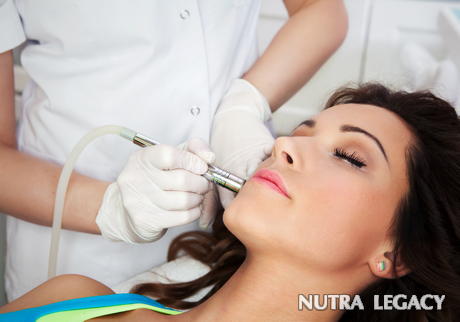3 Best Methods for Acne Scar Removal

- Acne scars are caused by frequent squeezing and scratching of pimples
- Reducing acne breakouts with acne skin care products will help reduce both the appearance and the formation of new acne scars
While acne can be difficult to live with, the lasting scars that can be left behind by frequently squeezing, scratching, or messing with blemishes are even more challenging. They can be long-term reminders of past outbreaks. The good news is that methods of acne scar removal are available. Below is information about three of the best options for acne scar removal treatment.
1. Laser Resurfacing
One of the newer options is acne scar laser treatment, also known as laser resurfacing. In most cases, a Carbon Dioxide (CO2) laser is used in this type of acne treatment. The laser tool looks a bit like a wand which is move over the affected part of the skin. The laser destroys the upper layer of tissue to reveal new skin underneath. For deeper scarring, multiple layers may need to be removed.
As you might expect, laser resurfacing does cause some discomfort during the procedure. You may be able to have a local anesthetic or some other type of pain medication to help alleviate that discomfort. Once the procedure is completed, the new skin is going to be very sensitive. For this reason, you’ll need to take some special precautions with it. That includes limiting skin exposure, keeping it covered with bandages, and making sure the skin stays moist.
Although healing is usually complete in a few weeks, your skin may stay a light pink color for as long as a few months.
2. Dermabrasion
Another option for acne scars removal is called dermabrasion. The idea is really the same as with laser resurfacing only with this method a tool called a fraise or a wire brush is used. The tool rotates very quickly against the skin so the top layers are removed. Because of the injury to the skin, new skin is prompted to begin growing. Depending on the severity of the scars, the tool may need to be applied with more pressure or for longer periods of time. While laser resurfacing includes minimal bleeding, dermabrasion usually causes more significant bleeding.
Obviously, this procedure is going to cause some pain. In most cases, a local anesthetic is applied to the area, as well as ice packs, to help make things easier on the patient. If you have a lot of scarring, your doctor may even recommend sedation. After the procedure, the new skin grows back in about a week and from then on you’ll just need to be careful about keeping the area clean to prevent infections and minimally exposed to the sun.
3. Chemical Peels
With a chemical peel, the outer skin epidermis layer is removed in a different way: this time with chemicals that cause blistering and sloughing. An acid, such as salicylic or carbolic acid, is applied to the scarred areas of your skin. The acid causes the skin to be injured and, again, new skin forms in its place. For most chemical peels, no anesthetic is needed. Most patients feel only a warm to hot sensation as the chemical works for about 5 to 10 minutes followed by a stinging sensation that can be easily numbed by ice packs.
Following the procedure, you’ll see the skin blistering and peeling off in 7 to 14 days depending on the depth of the peel required for scar treatment. The new skin will need to be treated carefully and protected from the sun for several weeks to months because of its increased sensitivity.
The information supplied in this article is not to be considered as medical advice and is for educational purposes only.
|
2 Responses to “3 Best Methods for Acne Scar Removal” | ||||||||||||||





 5 Jan 2009
5 Jan 2009
its not easy living with acne people stare and make fun of you for it but the worst part of it is when you finally get rid of all the bumps it leaves behind scars wich i hate.February 6th, 2010 at 5:39 am
My dermatologist has improved my skin's appearance with a series of 70% glycolic acid treatments. Now, still have a few lesions , but nothing like it used to be.January 23rd, 2009 at 2:20 pm